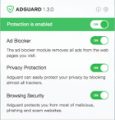What is ExploreAnalog
According to security researchers, ExploreAnalog is a PUA (potentially unwanted application) that falls under the category of Adware. Adware can make big problem to your MAC. Adware sometimes named ‘ad-supported’ software is a kind of harmful software which displays lots of unwanted ads in form of popups, coupons, promos or even fake alerts. Adware can seriously affect your privacy, your computer’s performance and security. Adware can be installed onto your Apple Mac without your knowledge.
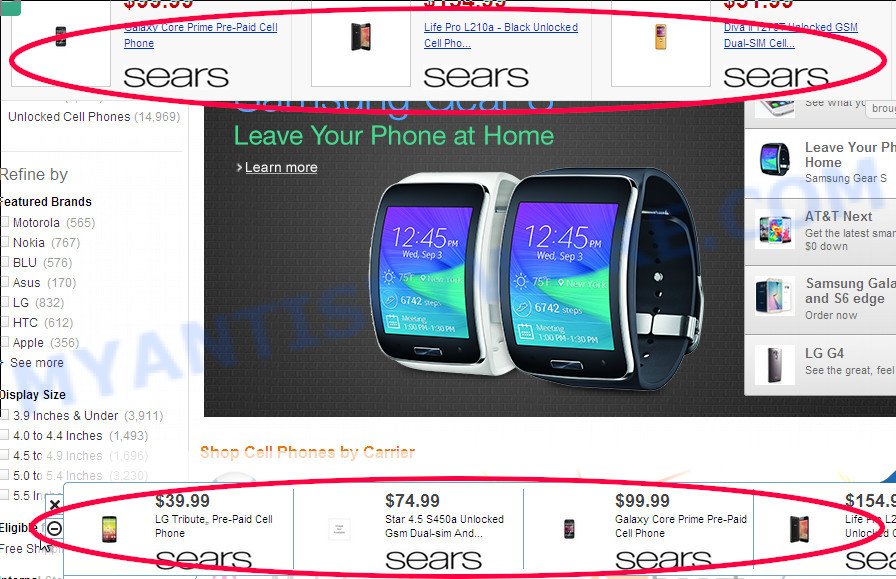
Unwanted ads
The worst is, the ExploreAnalog adware can gather your surfing history and privacy information, including passwords and credit card numbers. In the future, marketing-type data about you can be used for marketing purposes.
The guidance below explaining steps to uninstall the ExploreAnalog app. Feel free to use it for removal of the adware software that may attack Chrome, Firefox and Safari and other popular web browsers. The steps will help you remove ExploreAnalog and thus clean your web-browser from any unwanted advertisements.
How does ExploreAnalog get on your MAC
Adware gets onto Mac computers by being attached to certain free software. So always read carefully the installation screens, disclaimers, ‘Terms of Use’ and ‘Software license’ appearing during the install process. Additionally pay attention for bundled applications that are being installed along with the main application. Ensure that you unchecked all of them! Also, run an ad-blocker program that will help to block malicious and illegitimate webpages.
Threat Summary
| Name | ExploreAnalog, ExploreAnalog 1.0 app |
| Type | adware, potentially unwanted application (PUA), Mac malware, Mac virus |
| Detection Names | Program:MacOS/Vigram.A, Trojan-Downloader.OSX.Adload, OSX.Trojan.Gen, Adware.MAC.Generic, MacOS.Agent-MT, ApplicUnwnt, Osx.Adware.Cimpli and Adware/Adload!OSX |
| Distribution | Freeware installers, torrent downloads, shady popup ads and fake updaters |
| Symptoms | The web-page links redirect to a websites different from what you expected, web browser pop ups appear and recommend fake Flash updates, there is an unexpected application in the ‘Applications’ section of the Finder, an unwanted toolbar appears in your browser, unwanted changes in your web browser like displaying new tabs you did not open, speed test good but internet slow. |
| Removal | ExploreAnalog removal guide |
How to remove ExploreAnalog from Mac device
In the few simple steps below we will have a look at the adware and how to delete ExploreAnalog from Chrome, Safari and Mozilla Firefox web-browsers for Mac, natively or by using a few free removal tools. Some of the steps will require you to reboot your MAC system or exit this web page. So, read this tutorial carefully, then bookmark this page or open it on your smartphone for later reference.
To remove ExploreAnalog, follow the steps below:
- Remove unwanted profiles on Mac device
- Remove ExploreAnalog related applications through the Finder
- Remove ExploreAnalog related files and folders
- Scan your Mac with MalwareBytes
- Remove ExploreAnalog from Safari, Chrome, Firefox
- How to stay safe online
- Finish words
Remove unwanted profiles on Mac device
ExploreAnalog can install a configuration profile on the Mac system to block changes made to the browser settings. Therefore, you need to open system preferences, find and delete the profile installed by the adware.
Click Apple menu ( ![]() ) > System Preferences.
) > System Preferences.
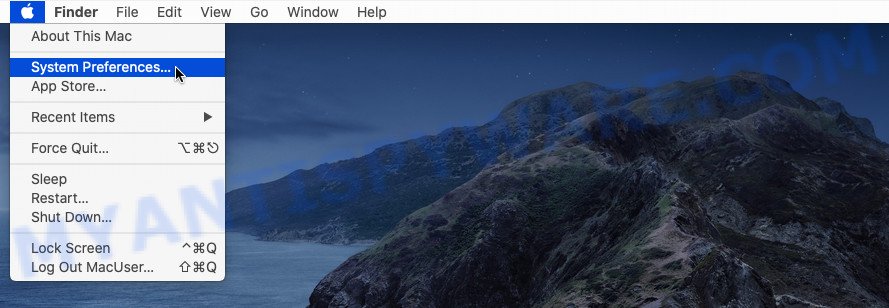
In System Preferences, select Profiles. if there is no Profiles in the list of preferences, that means there are no profiles installed on the Mac device. If there is Profiles in the list, then click on it, then select a profile related to ExploreAnalog.
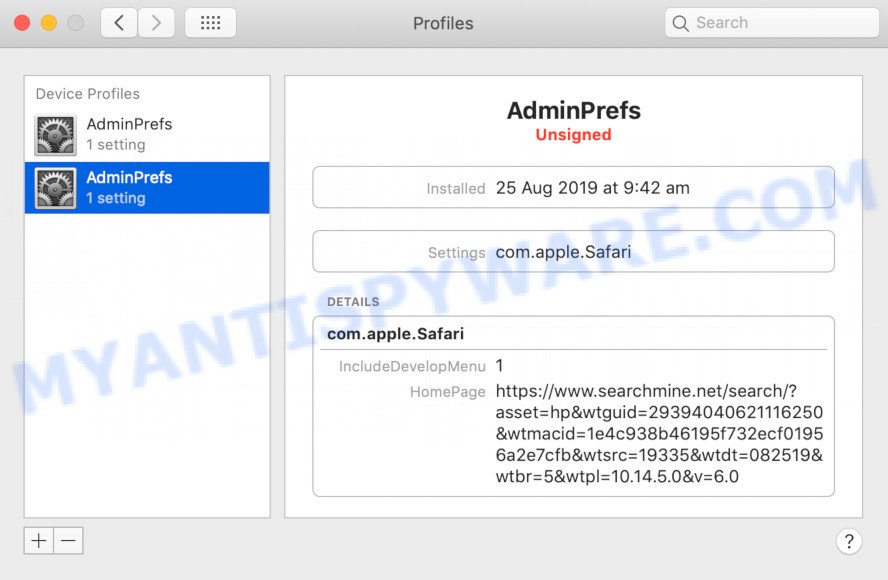
To delete a malicious profile, click on the minus button ( – ) located at the bottom-left of the Profiles screen.
Remove ExploreAnalog related applications through the Finder
Some of adware, PUPs and browser hijackers can be removed using the Move to Trash utility which is located in the Finder. So, if you are using any version of Mac OS and you have noticed an unwanted program, then first try to remove it through the Finder.
Open Finder and click “Applications”.
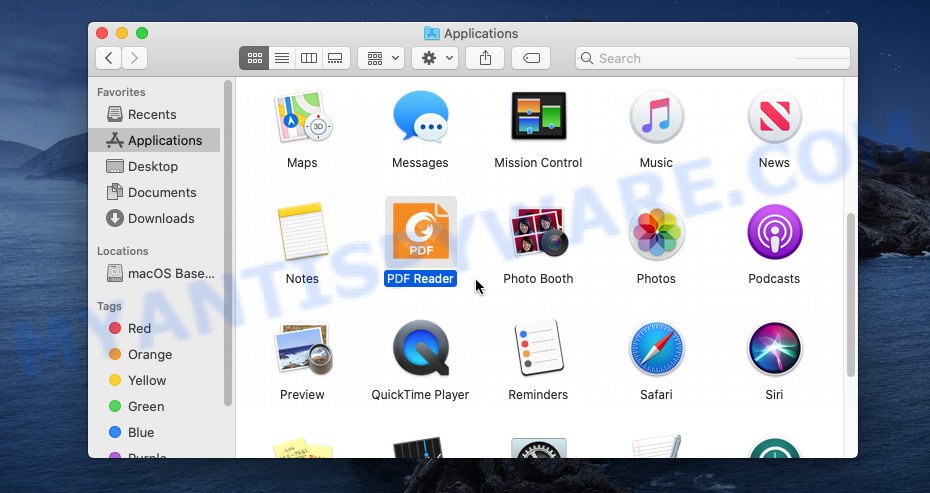
It will display a list of all applications installed on your MAC OS. Scroll through the all list, and remove any questionable and unknown apps. Right click to questionable program and select “Move to Trash”. Another solution is drag the application from the Applications folder to the Trash.
Most important, scroll through the all list, and move to trash any unknown applications. Don’t forget, choose Finder -> Empty Trash.
Remove ExploreAnalog related files and folders
Now you need to try to find ExploreAnalog related files and folders, and then delete them manually. You need to look for these files in certain directories. To quickly open them, we recommend using the “Go to Folder…” command.
ExploreAnalog creates several files, these files must be found and removed. Below is a list of files associated with this unwanted application.
- /Library/LaunchDaemons/com.ExploreAnalog.system.plist
- ~/Library/LaunchAgents/com.ExploreAnalog.service.plist
- /Library/Application Support/.(RANDOM)/System/com.ExploreAnalog.system
- ~/Library/Application Support/.(RANDOM)/Services/com.ExploreAnalog.service.app
Some files created by ExploreAnalog are hidden from the user. To find and delete them, you need to enable “show hidden files”. To do this, use the shortcut CMD + SHIFT + . Press once to show hidden files and again to hide them. There is another way. Click Finder -> Applications -> Utilities -> Terminal. In Terminal, paste the following text: defaults write com.apple.finder AppleShowAllFiles YES

Press Enter. Hold the ‘Option/alt’ key, then right click on the Finder icon in the dock and click Relaunch.
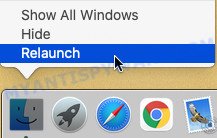
Click on the Finder icon. From the menu bar, select Go and click “Go to Folder…”. As a result, a small window opens that allows you to quickly open a specific directory.

Check for ExploreAnalog generated files in the /Library/LaunchAgents folder

In the “Go to Folder…” window, type the following text and press Go:
/Library/LaunchAgents
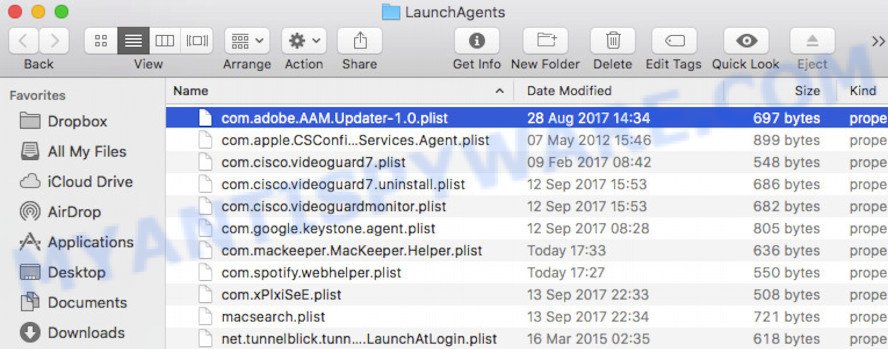
This will open the contents of the “/Library/LaunchAgents” folder. Look carefully at it and pay special attention to recently created files, as well as files that have a suspicious name. Move all suspicious files to the Trash. A few examples of files: com.google.defaultsearch.plist, , com.ExploreAnalog.service.plist, installapp.plist, macsearch.plist, com.net-preferences.plist, search.plist and com.machelper.plist. Most often, PUPs, adware and browser hijackers create several files with similar names.
Check for ExploreAnalog generated files in the /Library/Application Support folder

In the “Go to Folder…” window, type the following text and press Go:
/Library/Application Support
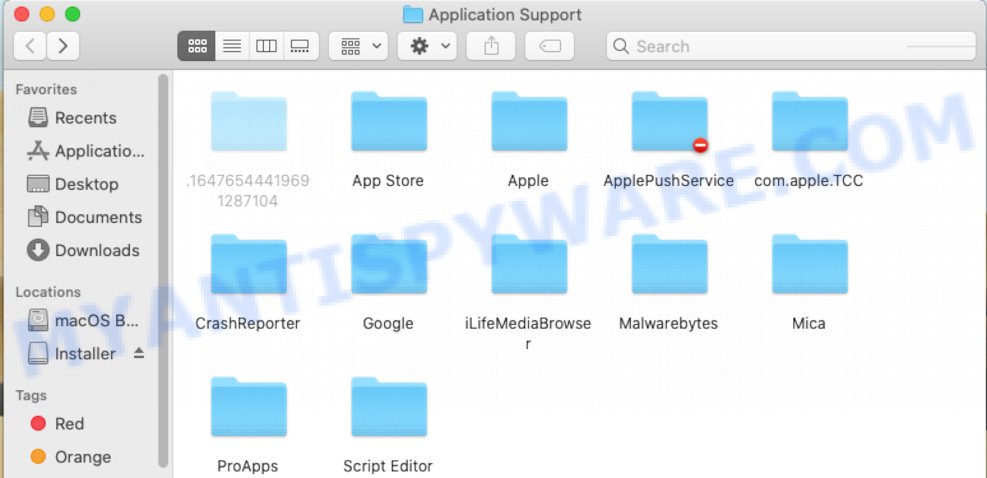
This will open the contents of the “Application Support” folder. Look carefully at its contents, pay special attention to recently added/changed folders and files. Check the contents of suspicious folders, if there is a file with a name similar to com.ExploreAnalog.system, then this folder must be deleted. Move all suspicious folders and files to the Trash.
Check for ExploreAnalog generated files in the “~/Library/LaunchAgents” folder

In the “Go to Folder…” window, type the following text and press Go:
~/Library/LaunchAgents

Proceed in the same way as with the “/Library/LaunchAgents” and “/Library/Application Support” folders. Look for suspicious and recently added files. Move all suspicious files to the Trash.
Check for ExploreAnalog generated files in the /Library/LaunchDaemons folder
In the “Go to Folder…” window, type the following text and press Go:
/Library/LaunchDaemons

Carefully browse the entire list of files and pay special attention to recently created files, as well as files that have a suspicious name. Move all suspicious files to the Trash. A few examples of files to be deleted: com.ExploreAnalog.system.plist, com.search.system.plist, com.machelper.system.plist, com.installapp.system.plist and com.macsearch.system.plist. In most cases, browser hijackers, adware and PUPs create several files with similar names.
Scan your Mac with MalwareBytes
If you carefully followed the previous steps, then you should be able to remove ExploreAnalog. Of course, very often browser hijackers, potentially unwanted programs and adware hides on a Mac computer, disguising itself as legitimate apps and files. Therefore, in some cases, it is difficult for an inexperienced user to decide whether a particular file is part of adware, potentially unwanted programs and browser hijackers. Therefore, we recommend you to run MalwareBytes AntiMalware to scan the Mac computer.
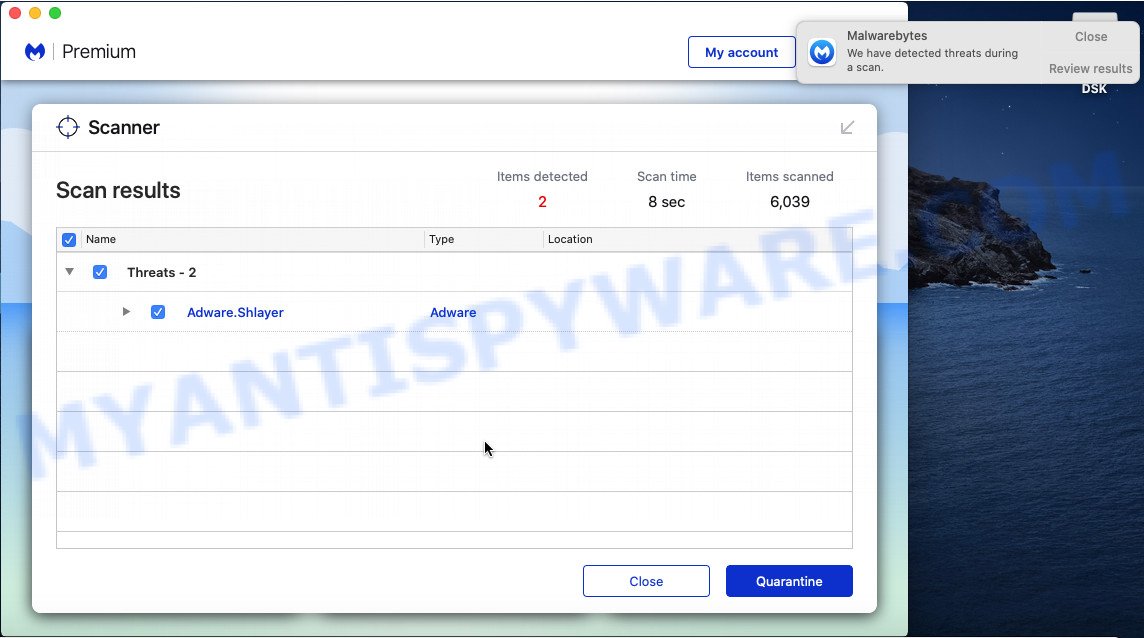
- Installing the MalwareBytes is simple. First you’ll need to download MalwareBytes AntiMalware by clicking on the following link.
Malwarebytes Anti-malware (Mac)
21008 downloads
Author: Malwarebytes
Category: Security tools
Update: September 10, 2020
- Once the downloading process is done, close all programs and windows on your computer. Open a folder in which you saved it. Run the downloaded file and follow the prompts.
- Press the “Scan” button to perform a system scan with this utility for the ExploreAnalog adware. This process may take some time, so please be patient. When a malware, adware software or PUPs are found, the number of the security threats will change accordingly.
- Once MalwareBytes Anti-Malware has finished scanning your MAC, MalwareBytes Free will open you the results. Next, you need to click “Quarantine”.
Remove ExploreAnalog from Safari, Chrome, Firefox
This step will show you how to get rid of malicious extensions. This can get rid of ExploreAnalog adware software and fix some browsing issues, especially after adware infection.
You can also try to delete ExploreAnalog adware by reset Chrome settings. |
If you are still experiencing issues with ExploreAnalog adware removal, you need to reset Firefox browser. |
|
How to stay safe online
To put it simply, you need to use an ad-blocker tool (AdGuard, for example). It will block and protect you from malicious web pages, unwanted advertisements and pop-ups. To be able to do that, the adblocker program uses a list of filters. Each filter is a rule that describes a malicious webpage, an advertising content, a banner and others. The adblocker program automatically uses these filters, depending on the web-sites you’re visiting.
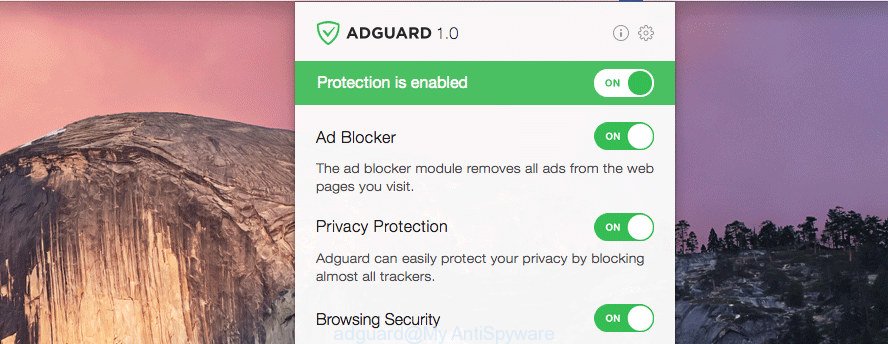
Download AdGuard from the following link.
3779 downloads
Author: © Adguard
Category: Security tools
Update: January 17, 2018
Once downloading is done, run the downloaded file. The “Setup Wizard” window will show up on the computer screen.
Follow the prompts. AdGuard will then be installed. A window will show up asking you to confirm that you want to see a quick tutorial. Click “Skip” button to close the window and use the default settings, or press “Get Started” to see an quick guide that will allow you get to know AdGuard better.
Each time, when you launch your MAC, AdGuard will launch automatically and stop unwanted pop-up ads, block harmful and misleading webpages.
Finish words
Now your machine should be free of the ExploreAnalog adware. We suggest that you keep MalwareBytes Anti Malware (to periodically scan your MAC system for new adware softwares and other malware) and AdGuard (to help you stop intrusive ads and harmful web pages). Moreover, to prevent any adware software, please stay clear of unknown and third party apps.
If you need more help with ExploreAnalog related issues, go to here.

